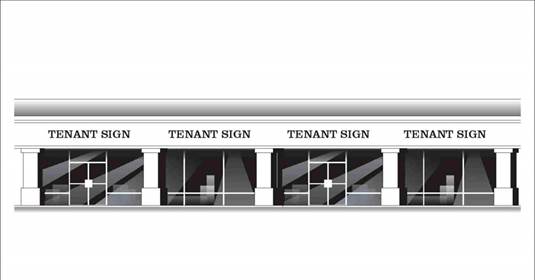All new signs, regardless of
whether they are installed in conjunction with an indoor or outdoor addition, or an alteration to a building or outdoor
lighting system, must meet the requirements for newly installed equipment in §110.9, §130.0, §130.3 and
§140.8
7.5.1
Sign Alterations
Existing indoor and outdoor
internally illuminated and externally illuminated signs that are altered as
specified by §141.0(b)2M
are required to meet the requirements of §140.8. Altered
components of existing indoor and outdoor internally and externally illuminated
signs must also meet the requirements of §130.0.
These requirements (either Maximum
Allowed or Compliant Alternate Lighting Sources) are triggered by alterations to existing
internally or externally illuminated signs when any of the following occurs as
result of the alteration, as specified in §141.0(b)2M:
The connected lighting power is
increased.
More than 50 percent of the
ballasts are replaced and rewired.
The sign is relocated to a different location
on the same site or on a different site.
The requirements for signs are not
triggered when just the lamps are replaced, the sign face is replaced or the
ballasts are replaced (without rewiring).
Sign ballast rewiring that triggers
the alterations requirements generally involves rewiring from parallel to series
or vice versa, or when a ballast(s) is relocated within the same sign requiring
relocating the wires. This does not include routine in-place ballast
replacements.
Example 7-7
Question
We are
replacing 60 percent of the ballasts in a sign. Must we replace the remaining
ballasts in the sign in order to comply with the Energy Standards?
Answer
It depends.
If more than 50 percent of the ballasts are being replaced, and the replacement
involves rewiring the ballasts, then the requirements of §140.8 apply to the
whole sign. If more than 50 percent of the ballasts are being replaced during
regular maintenance, and the ballasts are not being rewired, then the sign is
not required to meet the Energy Standards requirements. However, when existing
wiring will allow the direct replacement of a magnetic ballast with a high
efficiency high frequency electronic fluorescent ballast, even though the Energy
Standards do not require the electronic ballast, the sign owner is encouraged to
replace the magnetic ballasts with an electronic ballast.
Example
7-8
Question
I have a
strip mall full of
signs. Must I immediately bring all of these signs into compliance even if I’m
not going to alter them?

Answer
No, only those
signs in which at least 50 percent of the ballasts are replaced and rewired, or
those signs that are moved to a new location (on the same property or different
property) must comply with the sign lighting energy requirements. Also, all
newly installed signs must also comply with the sign lighting energy
requirements.
